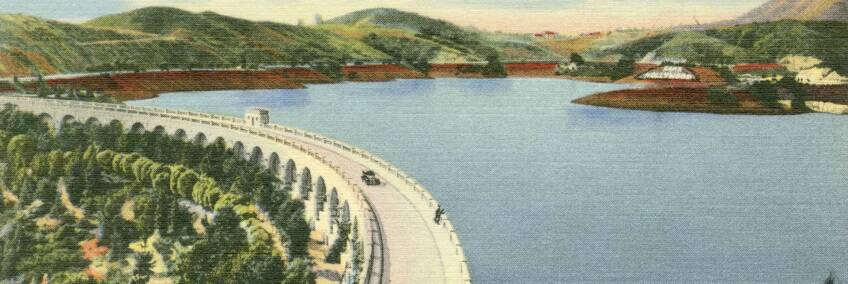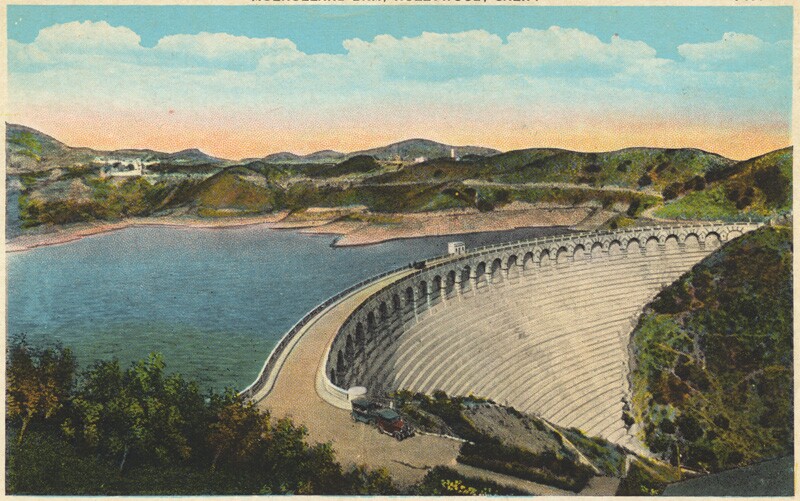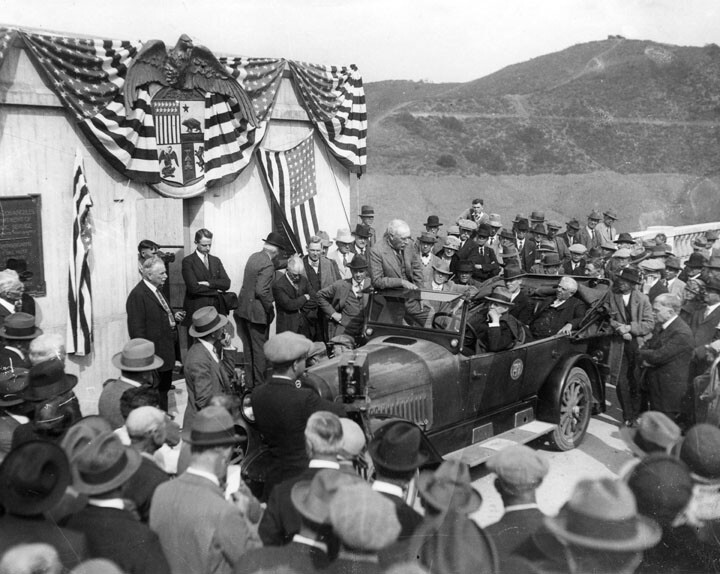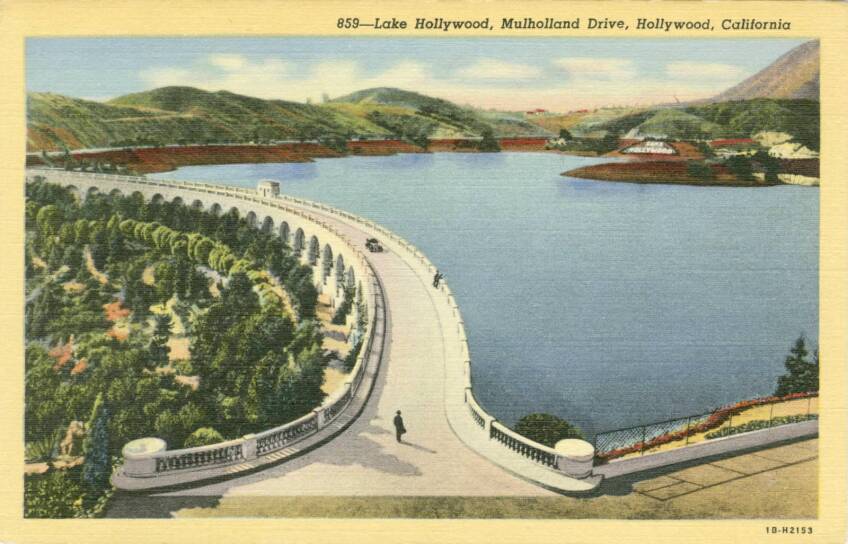The Mulholland Dam’s Vanishing Act

In the 1930s, engineers with L.A.’s Department of Water and Power (DWP) performed their most impressive trick yet: they made an entire dam disappear. In 1932, the white concrete face of Mulholland Dam loomed above the town of Hollywood, holding back Lake Hollywood and its theoretical capacity of 7,500 acre-feet of water, or nearly 2.5 billion gallons. By 1934, the dam had vanished beneath some 300,000 yards of earth and the fast-growing trees planted in it. It was still visible from above, from from below the dam looked simply like another landscaped hillside.
Why would the DWP want to hide this gleaming monument to modern engineering, designed to be a conspicuous feature of the Hollywood Hills?
Why would the DWP want to hide this gleaming monument to modern engineering, designed to be a conspicuous feature of the Hollywood Hills? After all, it had only been a few years since city officials gathered atop the structure in 1925 to honor its chief architect (and the chief architect of L.A.’s entire water delivery system), William Mulholland.
That, however, was before the cataclysmic collapse in 1928 of the city’s St. Francis Dam. Across Los Angeles, Mulholland’s reputation crumbled overnight, nearly as dramatically as the dam he had designed. In Hollywood, where residents had opposed the Mulholland Dam since its inception, the disaster raised fears that Lake Hollywood might soon wash away the movie capital of the world. Mulholland immediately ordered the reservoir's water level lowered, and panel after investigative panel declared the Hollywood Dam – like the structure in San Francisquito Canyon, a concrete gravity dam – safe. In an abundance of caution the city opted to retrofit it anyway. Earthmovers slowly piled tons and tons of earth atop its downstream face, trees took root, and the Mulholland Dam disappeared into the Hollywood Hills.




This article first appeared on Los Angeles magazine's website on June 11, 2014. It has been updated here with additional images.